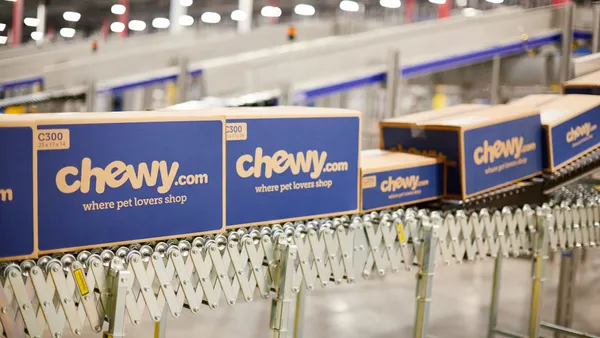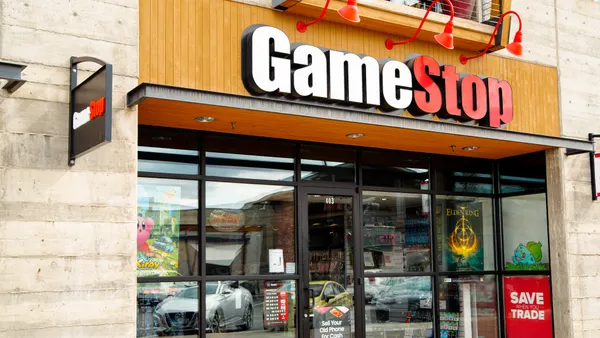Dive Brief:
-
Walmart CEO Doug McMillon on Friday announced in a company blog post that the retailer is building a new corporate campus in Bentonville, AR to house headquarters employees spread around Northwest Arkansas. McMillon anticipates the project will take five to seven years to complete.
-
The new campus will include “accommodations for a more digitally native workforce and space that encourages greater collaboration and speed,” he said. Plans include amenities like improved parking, meal services, fitness, natural lighting and landscaping within the community’s trail system, for easy walking and cycling access, according to the post. McMillon didn’t mention the project’s budget.
-
McMillon called the existing office space of more than 20 buildings sprawled across Northwest Arkansas an inefficient “patchwork” of buildings that are expensive to maintain and inhibit effective teamwork. “[B]ecause they are so dispersed, they literally encourage us to work in silos and cause us to waste time and energy traveling between locations,” he said.
Dive Insight:
While McMillon didn’t give away many details of the new campus that Walmart is planning, it seems to resemble the kind of work environment often found in Silicon Valley — with comfort and amenities designed to make it easier for employees to put in long hours while boosting creativity. Revamping office space, however, doesn’t guarantee the company’s culture will change. Walmart has already grappled with some culture clash with employees of Jet and other e-commerce companies now owned by Walmart, as the new parent banned some practices — including drinking alcohol in offices and even cursing —that had previously been allowed.
The news of a new headquarters comes just a week after Amazon announced it's looking for a city to sprout a second headquarters, poised to be a "full equal" to the company’s current Seattle headquarters. As the e-commerce giant continues to grow, Walmart has made it clear that it isn't prepared to go down without a digital fight. Along with its $3.3 billion purchase of Jet last year, Walmart brought in Jet founder Marc Lore as its U.S. e-commerce chief and commenced a steady stream of pure-play e-commerce acquisitions, including women’s apparel site ModCloth and menswear site Bonobos. The move has already paid dividends: in its first and second quarters, Walmart managed to push e-commerce growth of more than 60%.
The new brands also help the retailer improve the experience for existing customers and extend its reach to new customers, Ravi Jariwala, senior director of public relations at Walmart.com, previously told Retail Dive. Those new customers are in demographic groups that don't generally frequent Walmart stores; the average Walmart customer is less wealthy and quite a bit older than those typically shopping at Target and Amazon. The company has had difficulty in the past moving beyond that core base.
Walmart and those startups' CEOs have taken pains to assure customers that little will change, but the association with Walmart has disenchanted some of their fans. Jariwala and Bonobos CEO (and new Walmart executive) Andy Dunn have said those reports are overblown. Walmart is maintaining separation between Walmart and those new brands: Bonobos and Modcloth merchandise, for example, are being sold on Jet, but not on Walmart.com or at Walmart stores.
Walmart’s corporate culture is fairly well entrenched after half a century, experts have told Retail Dive.“You’re talking about the changing of the tide, and not just from the product development point of view. Walmart has thousands of stores and thousands of people. Walmart has an embedded culture, and the attempts they’ve made to change have failed largely because they’ve failed to change that culture,” Mark Cohen, director of retail studies at Columbia University's Graduate School of Business, told Retail Dive about the Jet merger last year.
"And even when Walmart does change, that pressure to show immediate results works against it," he said. "As soon as their efforts wouldn’t show fruit, they’ve abandoned it. It takes two to five years to change the composition of a large store and a large number of stores without losing your core customers and your underlying business... I’ve seen these kinds of initiatives come and go at Walmart, and I have never seen them stick. I think there are too many people there who are of the view ‘This too will pass.’”













